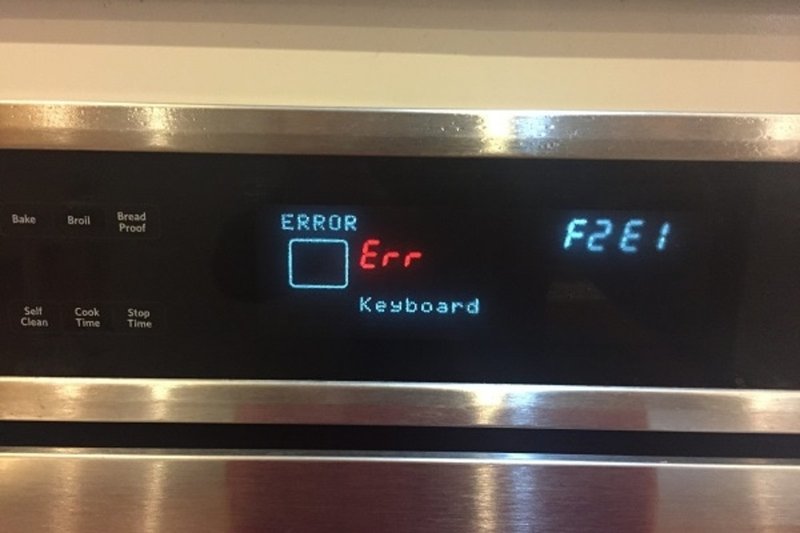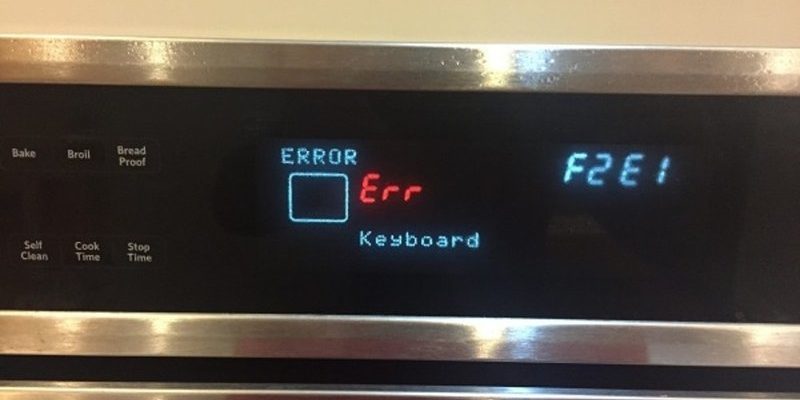
Error codes on microwaves like the GE models are a way for the appliance to tell you that something’s not quite right. Think of it as the microwave’s own method of speaking a language that can help diagnose its own ailments. The big question is: should you pay attention to the F2 error, or give it the cold shoulder and walk away? Here’s the deal—it’s not just a random glitch you can ignore. This code often indicates a more significant underlying issue that, if left unchecked, could worsen over time.
Understanding the F2 Error Code
So, what exactly does an F2 error code signify? In GE microwaves, the F2 code typically points to a problem with the keypad or the control board. The keypad is like the microwave’s brain, sending commands every time you press a button. When the keypad isn’t functioning correctly, it might send faulty signals, or worse, stop working altogether. Imagine trying to dial a phone number with a broken keypad—it’s frustrating and ineffective.
The control board, on the other hand, is like the central processing unit in computers. It processes input commands from the keypad and ensures that the microwave carries out the instructions correctly. A malfunction here can lead to various issues, including the F2 error. If the brain (keypad) or the heart (control board) is on the fritz, you’re going to encounter problems.
If you’re still wondering why you shouldn’t just ignore this, think of it this way: ignoring the F2 error code is like avoiding a check engine light in your car. Sure, your car may continue to run for a while, but overlooking that warning could lead to bigger and more expensive problems down the line. The same principle applies here. Addressing the issue early could save you from having to replace your entire microwave.
Common Causes of the F2 Error
Now that you know what the F2 error code means, let’s explore what might actually cause it. One common reason is a stuck or faulty keypad button. Over time, frequent use can wear down the buttons, making them unresponsive or causing them to stick. It’s like when your favorite pen starts skipping ink—you press harder, but it just doesn’t do what you want it to anymore.
Another potential culprit is a short circuit in the control panel. This can happen due to wear and tear, electrical surges, or poor connections. If you’ve ever had a string of lights that only half light up because of one faulty bulb, you understand how one small electrical issue can disrupt the entire system.
Moisture is another sneaky factor that can lead to an F2 error. Kitchens are full of steam and humidity, which can gradually seep into your appliances if they’re not adequately protected. If moisture gets into the control panel or keypad, it can cause unexpected malfunctions. It’s similar to how wet socks make for a very uncomfortable day—everything feels off until you fix the problem.
To fix these causes, you might consider cleaning and inspecting the keypad, ensuring there are no stuck buttons or visible damage. If moisture is suspected, ensuring your microwave is placed in a well-ventilated area can help prevent future issues.
Steps to Resolve the F2 Error
Okay, so you’ve got this pesky F2 error code flashing, and it’s time to take action. What should you do next? First, try a soft reset by unplugging your microwave for a few minutes, then plugging it back in. It’s like rebooting your computer, allowing the microwave’s system to reset and, hopefully, clear the error.
If the error persists, check the keypad. Press each button carefully to see if any of them are stuck or not responding. While doing this, give it a gentle clean with a soft, slightly damp cloth—sometimes a little cleanliness can resolve minor glitches. If you find that cleaning doesn’t help, the keypad itself might be faulty and in need of replacement.
Should the problem lie with the control board, this is usually a more complex fix, often requiring professional assistance. Attempting to replace or repair it yourself could void your warranty or cause further damage. Imagine trying to perform surgery without the right tools or knowledge—it’s probably best left to the experts.
If you need to call a service technician, ensure they are certified to work on GE appliances. While waiting for repair, you might need to find alternative ways to heat your food—consider it a chance to rediscover the art of stove cooking or using a conventional oven.
Preventive Measures for the Future
Prevention is always better than cure, right? To avoid encountering the F2 error code again, consider some preventive measures. Regularly clean the exterior and keypad of your microwave to prevent dirt and grime build-up. Think of it like brushing your teeth—routine maintenance can stave off bigger problems.
Keep your microwave away from excessive moisture and ensure it’s in a well-ventilated space. Just as you wouldn’t leave your electronics out in the rain, protect your microwave from kitchen humidity.
Lastly, be mindful of not overloading your microwave with tasks. Give it a break between uses to prevent overheating, much like allowing your car engine to cool down after a long drive.
By understanding the importance of the F2 error code and taking the right steps, you’re more equipped to keep your microwave running smoothly and avoid unexpected disruptions to your daily routine.
